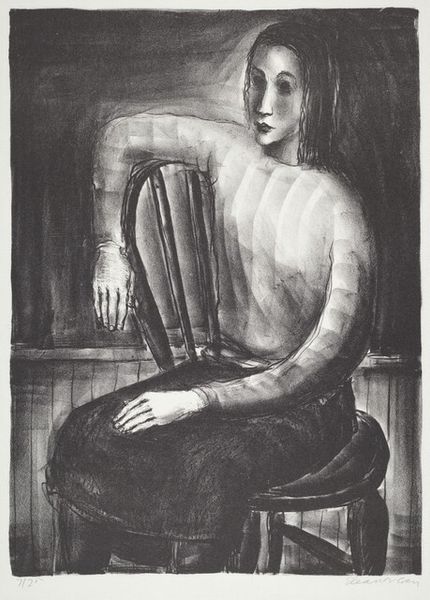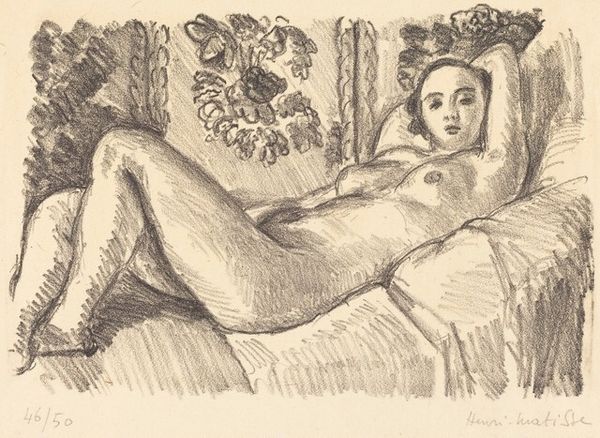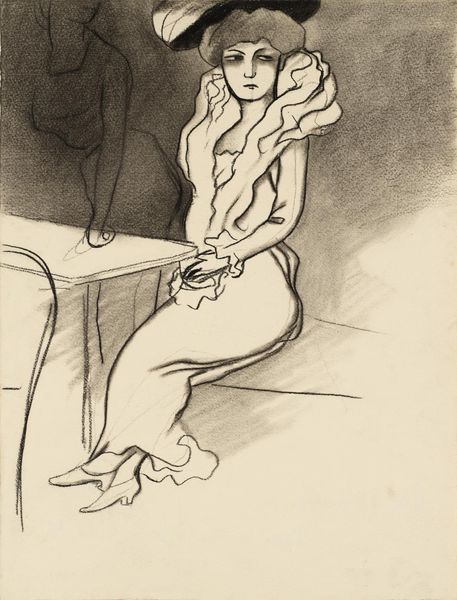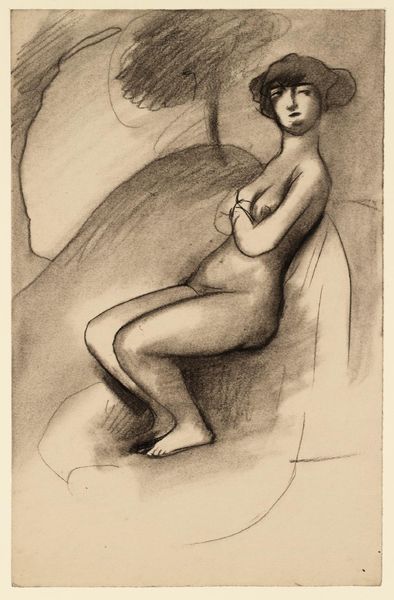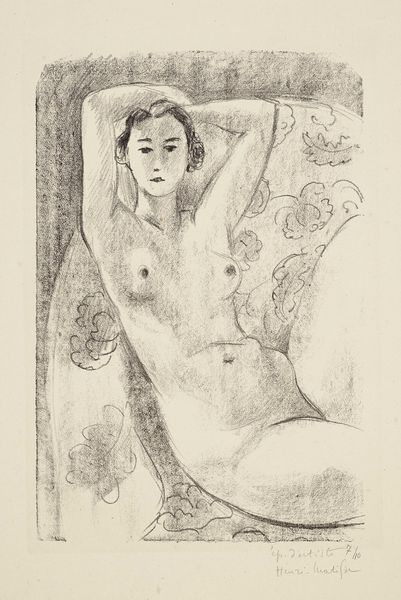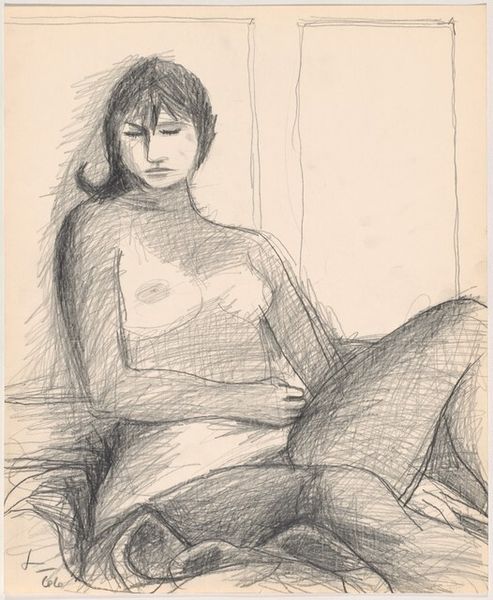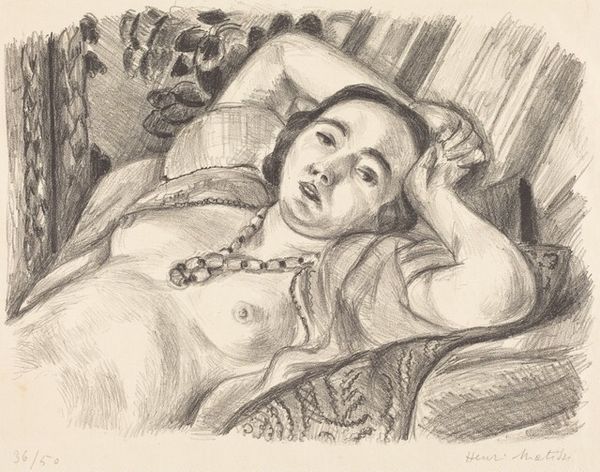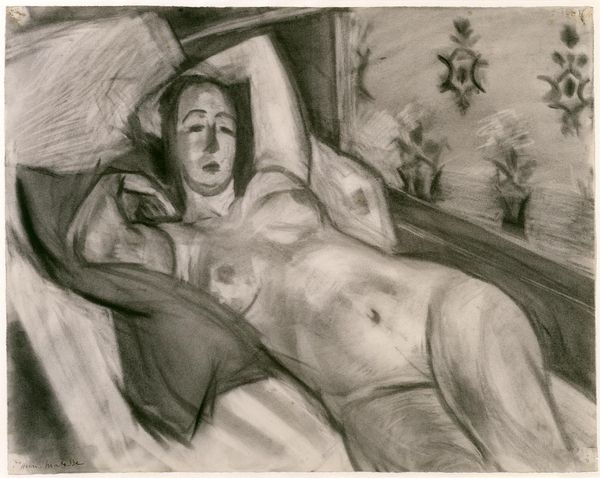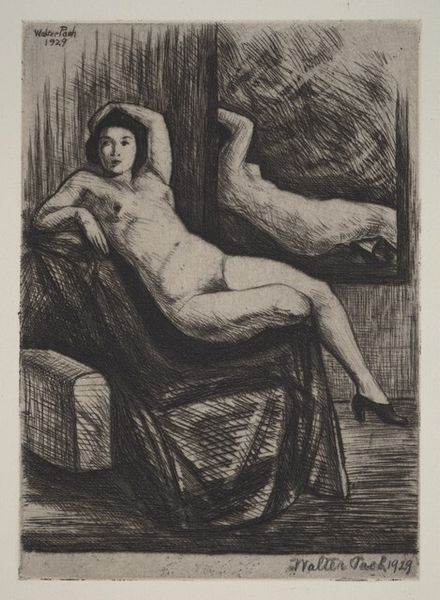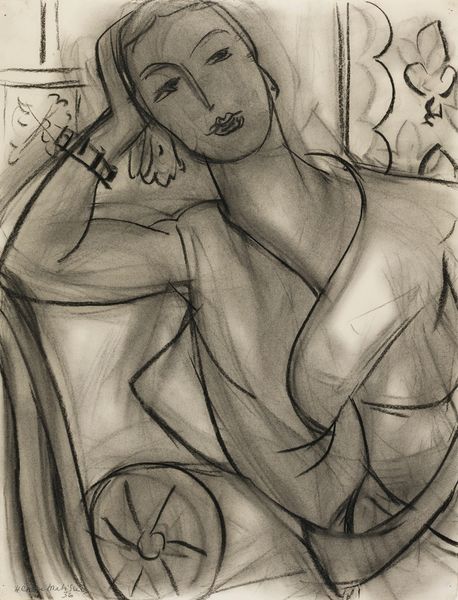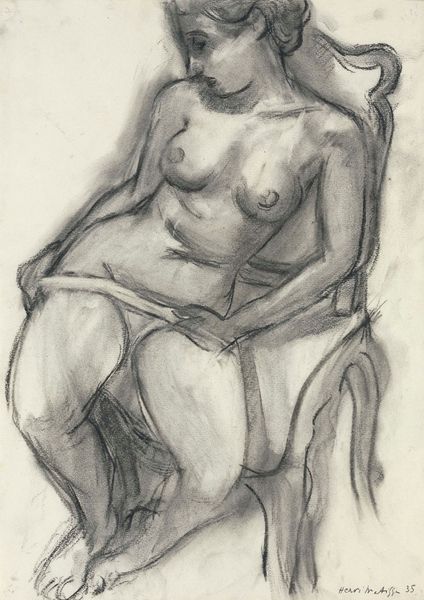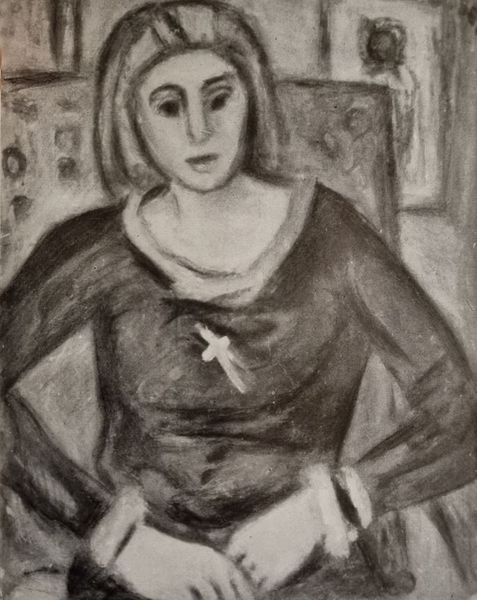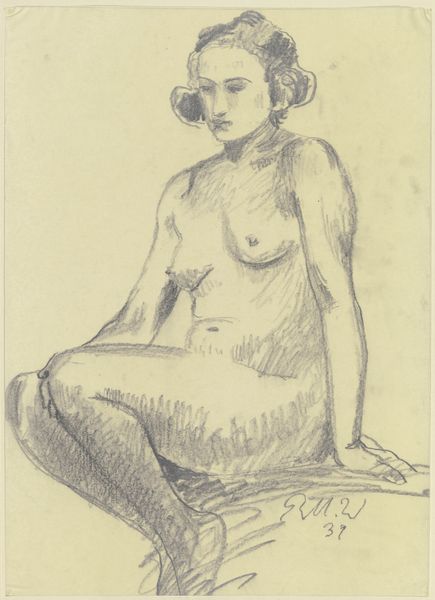
Seated Odalisque with Tulle Skirt (Odalisque assis à la jupe de tulle) 1924
0:00
0:00
Copyright: National Gallery of Art: CC0 1.0
Editor: This is Henri Matisse's "Seated Odalisque with Tulle Skirt," made in 1924. It's a lithograph, a pencil drawing turned into a print. The details in the skirt are striking, but something about the woman's direct gaze feels almost confrontational. What do you see in this piece? Curator: The "odalisque," a figure popularized by Ingres and Delacroix, becomes a potent symbol here. The gaze confronts, yes, but it also reclaims. Consider the history: the odalisque, traditionally a concubine, was often depicted through a colonial, male gaze. Editor: So, you're saying Matisse is playing with that tradition? Curator: Absolutely. But further than just playing – consider the skirt, not just for its visual intricacies, but for its symbolic weight. It simultaneously conceals and reveals. What emotions are conjured for you when considering her veiled exposure? Editor: That adds a new layer. It’s not just about the pose, it's about questioning who gets to look, and what they think they're seeing. The patterns almost become a kind of protective armour. Curator: Precisely. Look too at the floral motifs. These can be seen as decorations, objects to behold, or as symbols that express the feminine. I like to believe Matisse here empowers his figure to be the sole arbiter of the narrative, in direct resistance to cultural forces. Editor: Wow, I never thought about the flowers in that way. So much more to unpack here than initially met the eye! Curator: That's often the magic of art, isn't it? How something so simple on the surface can hold so much complexity. We see only the visible to reveal the invisible.
Comments
No comments
Be the first to comment and join the conversation on the ultimate creative platform.
